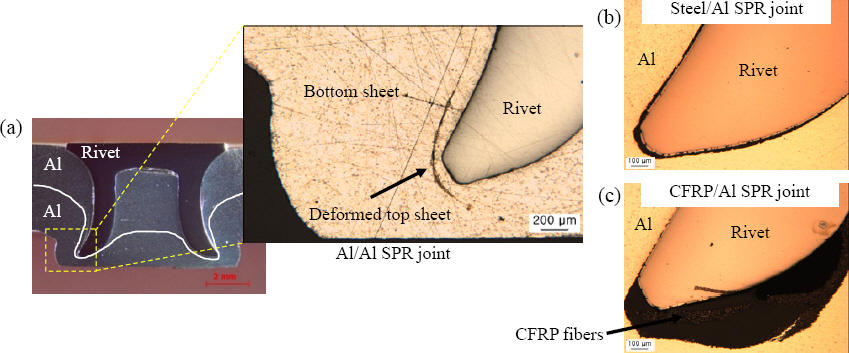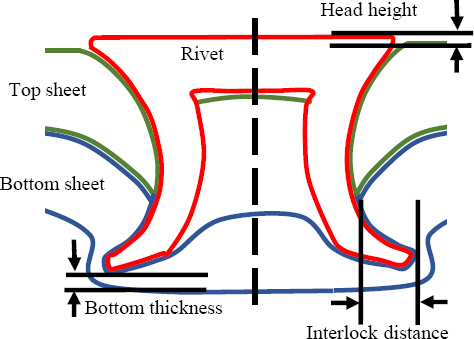3. M. A. Karim, J. H. Bae, D. H. Kam, C. Kim, W. H. Choi, and Y. Park, Assessment of rivet coating corrosion effect on strength degradation of CFRP/aluminum self- piercing riveted joints,
Surf. Coat. Technol. (2020) 393 125726
https://doi.org/10.1016/j.surfcoat.2020.125726
[CROSSREF] 10. H. M. Rao, J. Kang, G. Huff, K. Avery, and X. Su, Impact of rivet head height on the tensile and fatigue properties of lap shear self-pierced riveted CFRP to aluminum,
SAE, Int. J. Mater. Manuf. 10 (2017)
https://doi.org/10.4271/2017-01-0477
[CROSSREF] 13. J. Liang, H. Jiang, J. Zhang, X. Wu, X. Zhang, G. Li, and J. Cui, Investigations on mechanical properties and microtopography of electromagnetic self-piercing riveted joints with carbon fiber reinforced plastics/ aluminum alloy 5052,
Arch. Civ. Mech. Eng. 19 (2019) 240ŌĆō50.
https://doi.org/10.1016/j.acme.2018.11.001
[CROSSREF] 18. Y. Chen, M. Li, X. Yang, and W. Luo, Thin-walled structures damage and failure characteristics of CFRP/ aluminum single lap joints designed for lightweight applications,
Thin-Walled Struct. (2020) 153 106802
https://doi.org/10.1016/j.tws.2020.106802
[CROSSREF] 29. D. Li, L. Han, A. Chrysanthou, M. Shergold, and G. Williams, The effect of setting velocity on the static and fatigue strengths of self-piercing riveted joints for automotive applications, TMS 2014 143rd Annual Meeting Exhibition,
Springer International Publishing. (2014) 557ŌĆō64.
https://doi.org/10.1007/978-3-319-48237-89567
[CROSSREF] 31. A. Galińska and C. Galiński, Mechanical joining of fibre reinforced polymer composites to metal-A review, Part II:Riveting, clinching, non-adhesive form-locked joints,
pin loop. join. Polym. 12 (2020)
https://doi.org/10.3390/POLYM12081681
[CROSSREF] 36. H. R. Kotadia, A. Rahnama, I. R. Sohn, J. Kim, and S. Sridhar, Performance of dissimilar metal self-piercing riveting (SPR) joint and coating behaviour under corrosive environment,
J. Manuf. Process. 39 (2019) 259ŌĆō70.
https://doi.org/10.1016/j.jmapro.2019.02.024
[CROSSREF]














 PDF Links
PDF Links PubReader
PubReader ePub Link
ePub Link Full text via DOI
Full text via DOI Download Citation
Download Citation Print
Print



